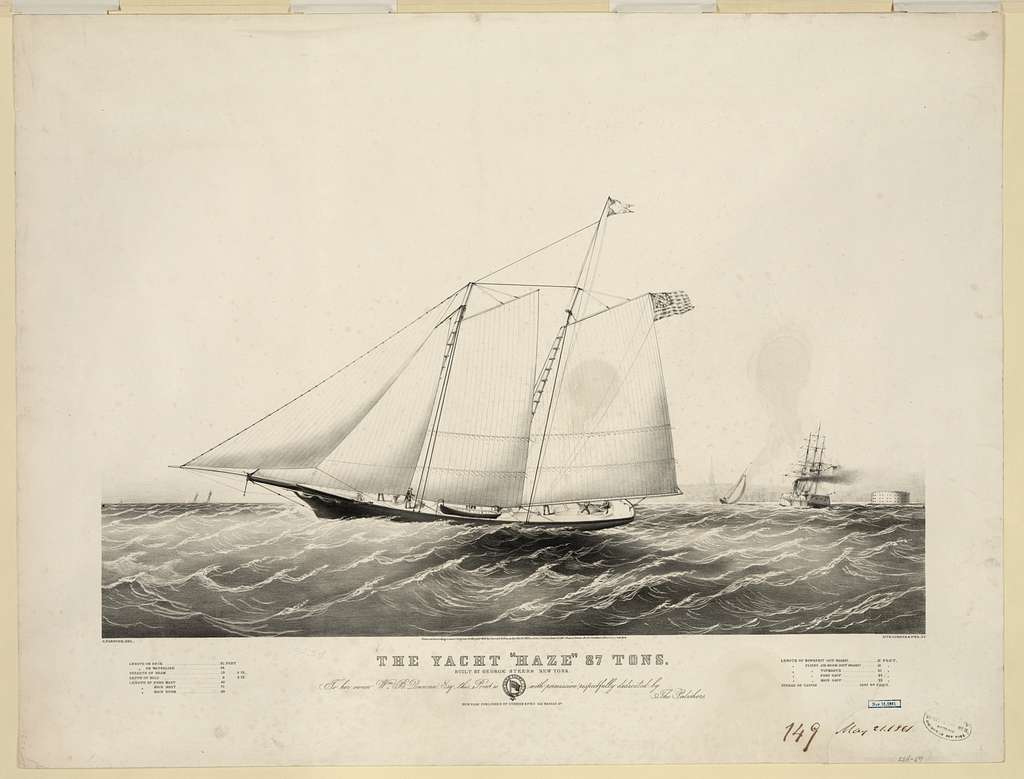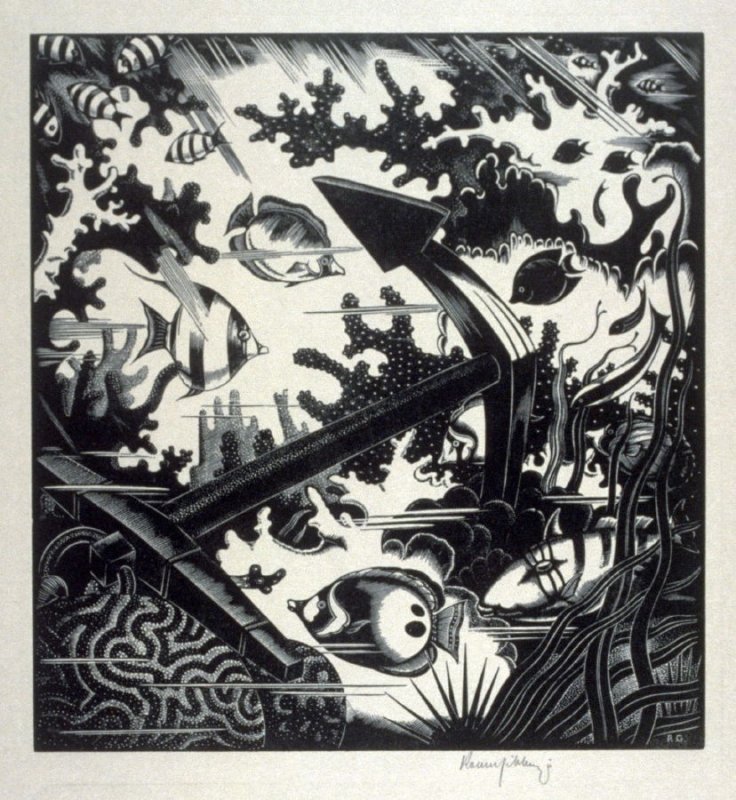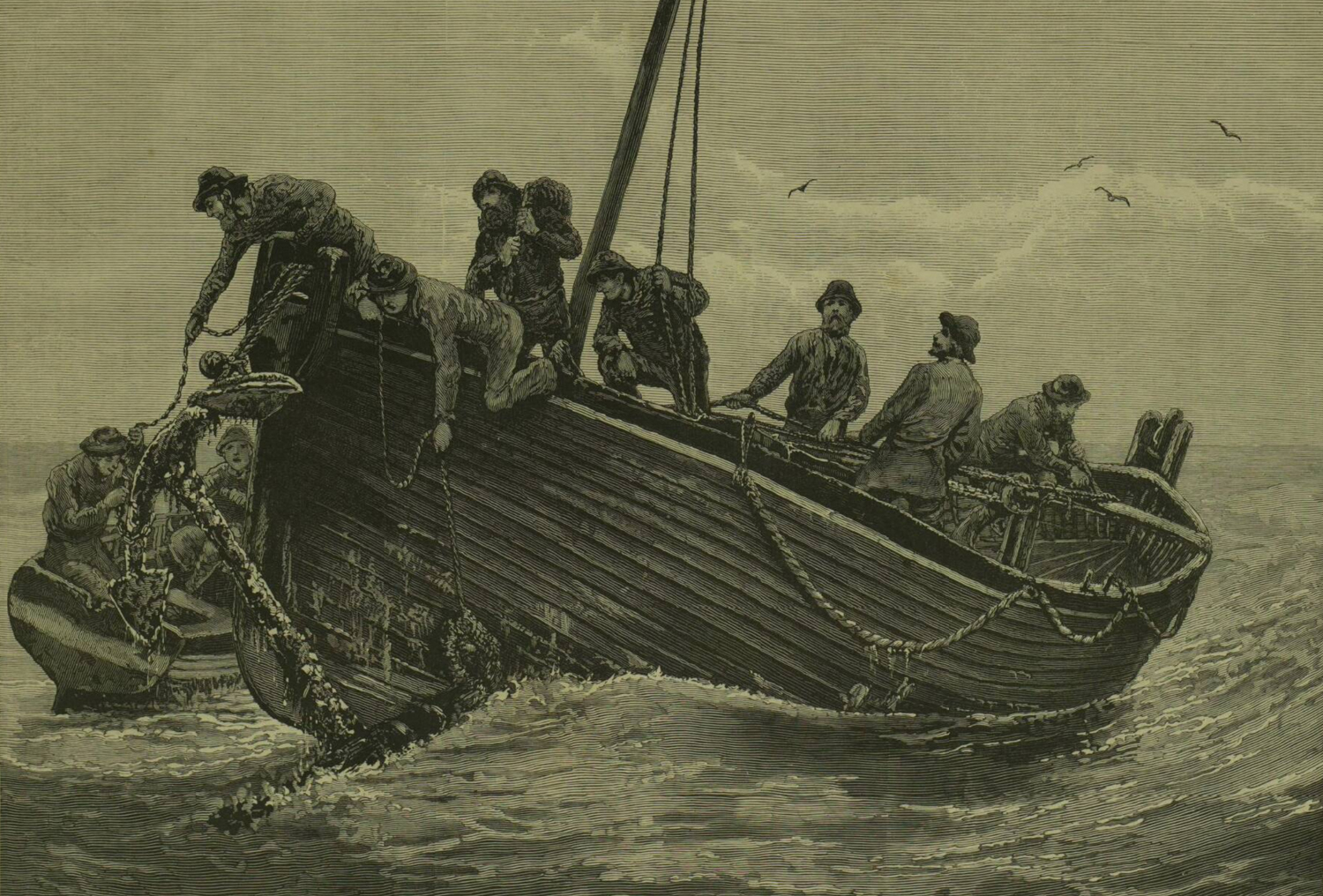While working on a blog post about the pilot boats of George Steers (coming next week!) I ran across a particularly funny story that occurred on board the pilot boat Haze and thought you guys would enjoy it.

Haze was a schooner built in 1853 by George Steers and William Hawthorne for William Butler Duncan, a member of the New York Yacht Club. Between 1853 and 1867 she was owned by several members of the club and was regularly entered in the club’s racing regattas. Haze was well known for her “staunchness, speed and good sea-going qualities.”
Like many yachts Haze was eventually sold into the pilot service and worked off the port of Boston and at the mouth of the Mississippi River before spending nearly thirty years with the pilots at Pensacola, Florida. Towards the end of her life Haze served as a fishing schooner and transported cargo to and from Key West. On May 4, 1908, while transporting a cargo of fruit from Bonacca (also called Guanaja, Honduras) Haze sprang a leak and sank. She was 55 years old.

In September of 1896, Haze was anchored in Pensacola harbor. The weather was calm and beautiful so the crystal clear waters of the bay were smooth. Although the boat was sitting in five fathoms of water—that’s thirty feet deep for you landlubbers–the bottom was clearly visible.
While the crew lounged around the deck in the beautiful weather one of the men looked over the side and spotted an anchor directly beneath the boat. The crew were elated at the prospect of acquiring a free anchor (you can never have too many because they’re easy to lose) and quickly went about the task of retrieving their prize.

The crew securely fished the anchor—in other words they got a rope around it—then attached a tackle normally used to lift the clew of the forestaysail to the line and hauled the anchor on board. You can imagine their chagrin when they discovered they had hauled their own anchor on board! Apparently the water was slack at the time and Haze had floated over her own mooring.
Oops! I guess sometimes even consummate professionals make silly mistakes.
